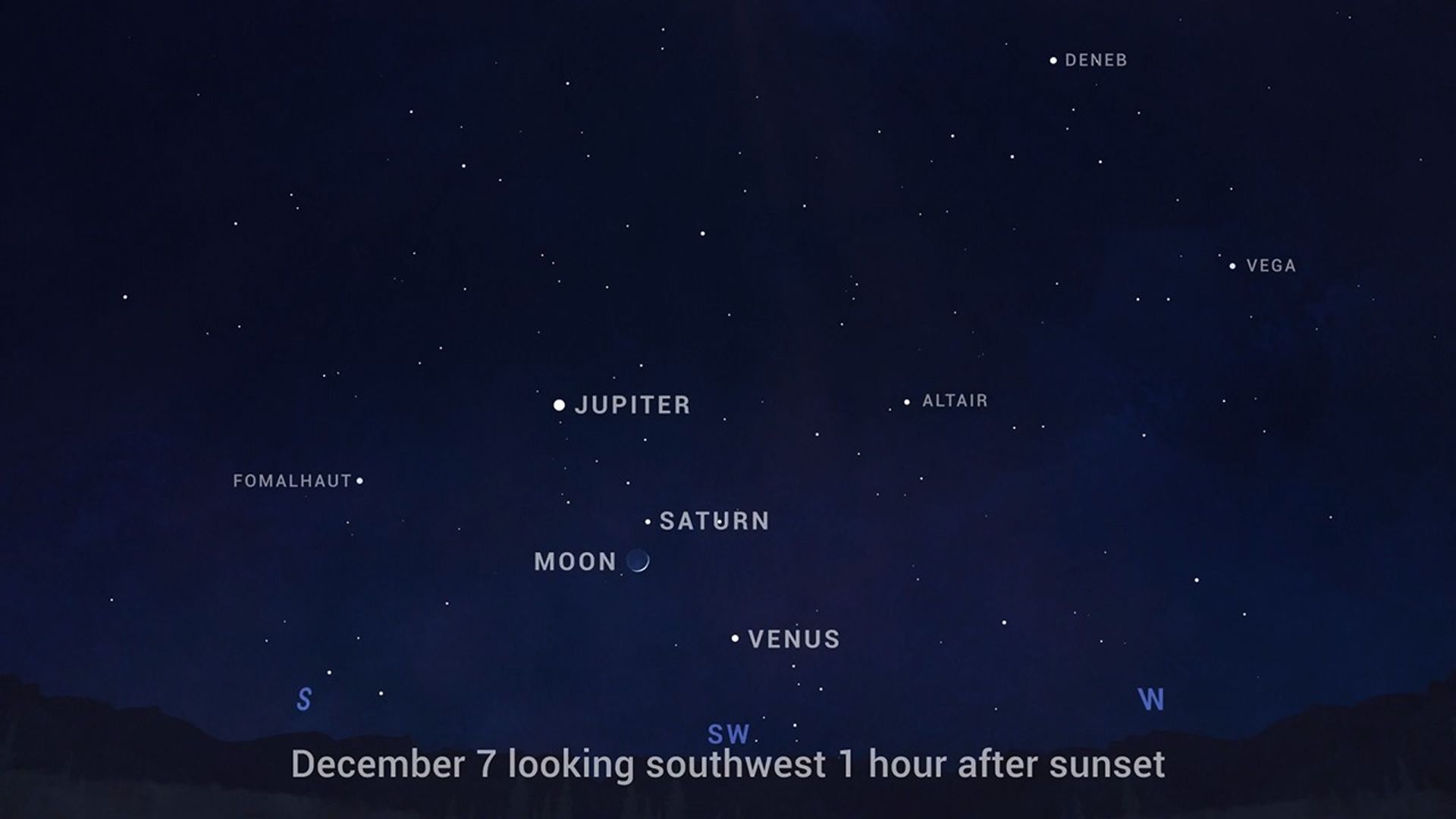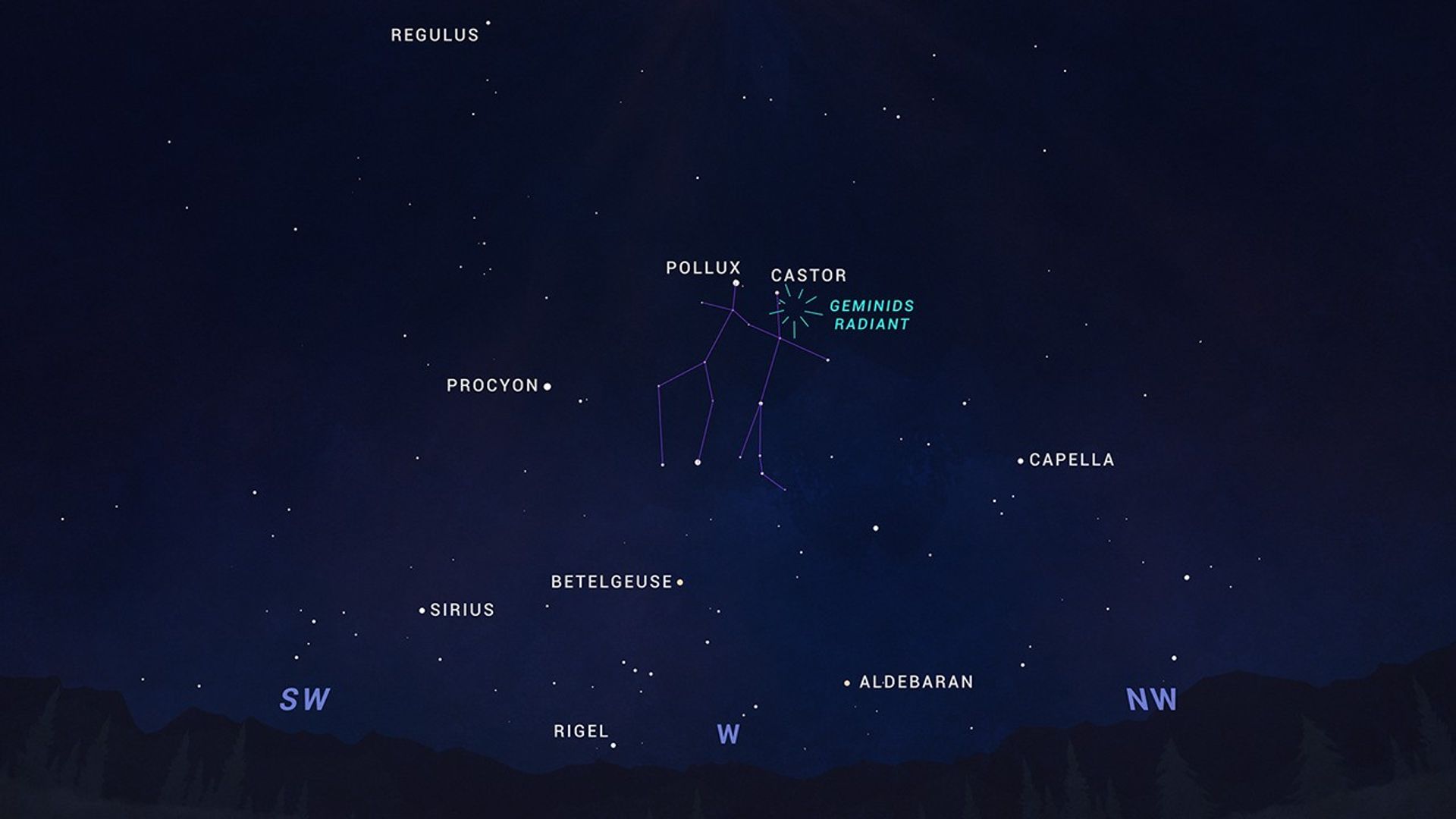What’s Up: December 2021
| Credit | Credit: NASA/JPL-Caltech |
|---|---|
| Historical Date | December 2, 2021 |
| Language |
|
What's Up for December? Your early evening highlights, a chance to catch a comet, and the annual Geminid meteors.
On December 6th through the 10th, look westward following sunset for the Moon visiting Venus, Saturn, and Jupiter in turn. The Moon's crescent fills out as it appears higher in the sky each evening over the course of the week.
Enjoy the view of dazzling Venus as the "evening star" while it lasts, though. Our cloud-covered neighbor planet will sink ever closer to the horizon during the month, disappearing for most of us by New Years'. It'll reappear in late January as a morning planet preceding the sunrise, and won't be back in evening skies until December of next year.
Next, in December, there's a recently discovered comet on its way into the inner solar system that might be worth trying to observe. It's known as Comet Leonard, and it will be at its closest to Earth on December 12th, just a couple of weeks before it reaches its closest distance from the Sun.
Now, comets are notoriously difficult to predict in terms of brightness and visibility. Comet Leonard is predicted to peak at a brightness that will probably require binoculars to spot it. There's a chance it could be bright enough to see with the unaided eye, but again, with comets, you really never know.
In the first couple of weeks of December, Comet Leonard can be found in the east before sunrise, passing between Arcturus and the handle of the Big Dipper. It approaches the horizon right around the time of its closest approach to Earth, meaning it'll likely be brighter but more challenging to observe. It then switches over to being an evening object after around Dec. 14th, for just a little while after the Sun sets – as it begins its long haul outward from the Sun again, progressively fading in brightness.
Finally, the Geminid meteors are a highlight of December skies each year. This year's meteor shower peaks overnight on December 13th and 14th. Apart from the weather, the phase of the Moon is usually the main factor in whether a meteor shower will have good viewing any given year. This year, the Moon will be almost 80% full at the peak of the Geminids, which isn't ideal. However, that bright Moon will set somewhere around 2 a.m. wherever you're located, leaving a couple of hours for meteor watching before dawn.
If you can't get outside or don't have clear, dark skies, you can watch NASA's live stream of the Geminid meteor shower.
The meteors appear to radiate from the constellation Gemini, which you'll find high in the west. Now while most annual meteor showers are caused by Earth passing through trails of dust-sized particles of comet debris, the Geminids are one of the few meteor showers that are caused by debris from an asteroid that crosses Earth's orbit – in this case, one called Phaethon.
Recently, NASA scientists shared findings that suggest the difference between an asteroid and a comet might be less clear than we realized, with fizzing sodium on Phaethon playing the same role as vaporizing ice on comets.
And whether you catch a glimpse of Comet Leonard, or meteors from Asteroid Phaethon, both are reminders of the deep connections between Earth and the rest of the solar system that we discover because we look outward, and we explore.
You can catch up on all of NASA's missions to explore the solar system and beyond at nasa.gov. I'm Preston Dyches from NASA's Jet Propulsion Laboratory, and that's What's Up for this month.




























